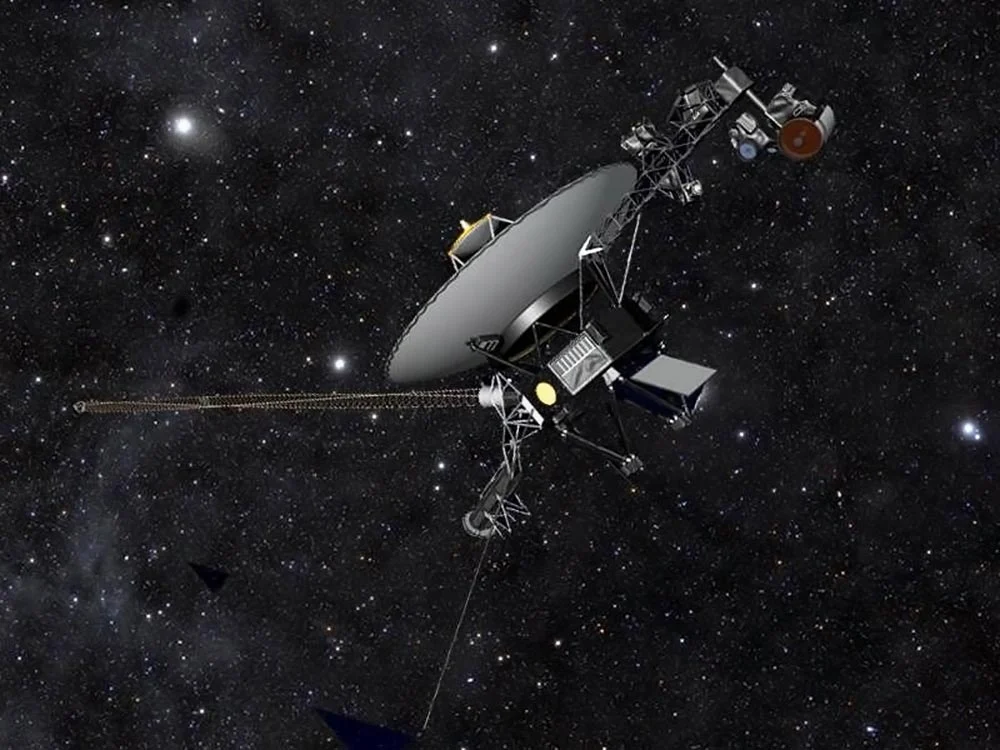In a puzzling turn of events, Voyager 1, one of NASA’s esteemed spacecraft, embarked on a journey into the realm of nonsense.
In a puzzling turn of events, Voyager 1, one of NASA’s esteemed spacecraft, embarked on a journey into the realm of nonsense. Positioned some 15 billion miles away from Earth, well beyond the sun’s protective embrace and nestled in the vastness of interstellar space, Voyager 1 encountered a dilemma.
Linda Spilker, Voyager project scientist at NASA‘s Jet Propulsion Laboratory (JPL), recounted the abrupt transition from decipherable binary conversations to an eerie silence. The familiar stream of 1’s and 0’s, serving as a conduit of scientific discovery, dissolved into an unintelligible hum.
The Voyager mission, initiated in 1977 alongside its companion Voyager 2, embarked on an epic voyage from Earth, traversing the outer reaches of the solar system with aspirations of reaching toward interstellar infinity. For billions who’ve never known a world devoid of the Voyagers, this enigmatic silence marked a poignant moment—the potential end of an era.
However, as the spacecraft aged, glitches became inevitable. The Voyager 1 team at JPL pinpointed the issue to the Flight Data System, an onboard computer responsible for parsing and transmitting scientific data. Speculation arose that a cosmic particle, amidst the harsh conditions of interstellar space, could have caused a memory bit flip, rendering the spacecraft’s communication incomprehensible.
Suzanne Dodd, Voyager project manager at JPL, likened the situation to a serious and unprecedented challenge. The inability to locate the corrupted memory bit heightened concerns, casting a shadow over the spacecraft’s fate and severing communication with its earthly handlers.
Yesterday, a glimmer of hope emerged as the team announced a breakthrough in deciphering Voyager 1’s cryptic transmissions. After months of tireless efforts, they succeeded in decoding a portion of the spacecraft’s garbled messages, offering a potential avenue to uncover its intended communications.
Joe Westlake, director of NASA’s heliophysics division, hailed the development as a significant stride in the ongoing saga of Voyager 1.
As readers delve into this narrative, Voyager 1 continues its solitary journey through the cosmic expanse, covering vast distances in mere moments. Since its communication hiccup last November, the spacecraft has journeyed further away, slipping beyond the grasp of Earth’s reach with each passing minute.
The Voyagers hold a special place in the annals of space exploration. Nicola Fox, NASA’s associate administrator for science, reveres them as national treasures, embodying humanity’s enduring quest for knowledge and discovery.
Conceived during a rare celestial alignment, the Voyager mission capitalized on a unique opportunity to explore the outer realms of the solar system. Equipped with nuclear power sources, these resilient probes defied conventional wisdom, venturing towards the distant stars.
Spilker reminisced about her early days working on the Voyager mission, fueled by a childhood fascination with celestial bodies. Witnessing the gas giants up close, with their intricate rings and enigmatic moons, offered a glimpse into the wonders of the cosmos.
The Voyagers’ unprecedented encounters with Jupiter, Saturn, Uranus, and Neptune yielded breathtaking imagery and groundbreaking discoveries. From the icy geysers of Triton to the towering cliffs of Miranda, these robotic emissaries unveiled the hidden marvels of our celestial neighbors.
Despite their age and the challenges of interstellar travel, the Voyagers continue to inspire awe and wonder, transcending the bounds of time and space. As they venture deeper into the cosmos, their legacy endures as a testament to humanity’s insatiable curiosity and boundless spirit of exploration.
